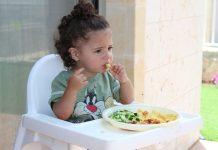I try to be thoughtful and intentional with everything I do and with everything I bring into our home. I am human, not perfect, and take the time to check myself often. I try and identify where I am, where I want to be and where I am going. I feel one of my most important tasks in life is to raise my daughter – Evangeline. Raising her includes many things – very high on my list of desires for myself is to teach her kindness, empathy and introduce her to diversity and inclusion early. I have a few ideas on how to be intentionally diverse and inclusive at home.
Diversity
Does your family interact with diverse people in your home? Does everyone you hang out with look like you? What about the age ranges of people who visit you at home. For families with children, how would you or your child identify someone who doesn’t look or think like you do? What television shows do you watch? Does the cast look like you? What are the characters saying to each other? What do the book characters look like? Are you changing narratives when reading or are you only purchasing and checking out the same kinds of books? I often think about the people who want to share that they have black friends and they know black people. I really wonder, do you invite them into your home? Do they know y’all are friends? Would they agree? Life outside your circle exists and likely doesn’t look or view things the same way as you and your crew would. The question is this – Are you and your home welcoming of diverse people, thoughts, places and things into your home? Would your children be surprised that other cultures exist?
Inclusion
What about inclusivity? Do you understand what your friends of different faiths believe? Are you including these parents and friends in discussions at the parent group meetings you are a part of? Do you listen to other’s ideas when they speak up? Are you offended when folks ask questions? Do you invite parents who are sitting alone over to your conversations to hear what they have to say? What opportunities have you missed or can you point out that you were dismissive or even unwelcoming of different views and perspectives? What news stations do you watch and is what you choose teaching your child to be inclusive? If you are honest about being inclusive, you get it – it isn’t really incredibly tough. If you fall in the minority group – like I often do – I honestly don’t have much of a choice – I listen. I can speak for myself here – I am often judged by my views. My personality has rubbed folks the wrong way. I am not by any means perfect, I just want to say what I think and feel too. When the dismal events of 2020 and the insurrection of 2021 happened, I heard all kinds of view and thoughts on the issues. I was also dismissed for my feelings on more times than I can count. I am intimidating when I express my thoughts and concerns. Ask yourself why. Why is it too much for you to listen to a different perspective? Sometimes our desire to believe what we have always been taught hinders us from listening and learning others perspectives.
Easy Solutions
You can branch out of your circle and invite a new person in – only if you are ready to actually listen to them. Ask your children these questions; ask them why as well. Explain what it means when folks don’t look like your family members. Read a book – I have a number of good recommendations for every age – my toddler and I read this one: We Are Different, We Are The Same. Ask your school aged kids who sits alone during the day. Give them suggestions on how to say hello and be kind. When watching a television show, if there are folks discussing different religions, different ideas than what you believe or understand, research it and have an open dialogue about why you believe what you do and why others may or may not. What about clothing choices – shaming others for wearing things you don’t believe in – what would your kids say your thoughts are on that. Are they body shaming others and you aren’t aware of it?
I often hear or I am asked, what can I do? Well, this seems relatively easy to me. Ask yourself first, what do you want your space to look like – Does it? What do you want the narrative to be about others who don’t believe as you do? Change it if you don’t like it. When your co-worker is sitting alone or is having a rough time, are you reaching out to listen? What about your employee(s)? Are you showing up for them? Is your staff diverse? What about your board and leadership team? Are you offended by the words that would be used to describe you or your space?
Once you are ready to diversify your space, make sure you are being both intentional and inclusive.
I’d love to hear your thoughts and also what books you recommend reading for every age.



















